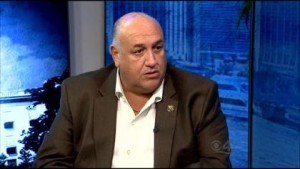Miami-Dade won’t bring on dozens of police cadets as planned late this summer, saying it has already met hiring targets.
A cadet class scheduled to start in August will be delayed at least until the fall, officials said Thursday, describing a move that would slide the $2.5 million cost of training about 45 rookie officers into the budget year that begins Oct. 1.
County officials said the change reflects an accelerated hiring schedule at the 4,000-person police department, the 10th-largest in the country and the arm of Miami-Dade government with the most employees. With two 36-week cadet classes already under way and shorter training sessions for police coming from other agencies, county administrators said the department is on track to have the 265 new patrol officers it wanted in 2016 without the August class.
“We were so successful in our hiring that we don’t need that class,” said Jennifer Moon, the county’s budget chief.
“We are in a desperate situation with the lack of officers we already have,” said Rivera, president of the Police Benevolent Association. “It’s just going to make it worse.”
Always a lightning rod for controversy, police funding has gotten even more attention this year as Mayor Carlos Gimenez won approval for his $1 million-a-year body-camera program and community leaders demanded action on a rash of child killings by gunfire.
Gimenez’s 2016 budget, the last before he faces a re-election vote in August, touted the addition of 100 officers “on patrol” for an agency forecast to spend about $600 million. The beefed-up patrols would come from shifting personnel from other areas — the budget shows a decrease of 16 payroll slots from Investigative Services — and filling vacant positions. At the start of 2016, the agency reported that vacant positions were down from about 550 in the fall to 345. At the same time, payroll expenses were 11 percent over budget because of unplanned overtime and severance expenses.
Miami-Dade’s police department is facing a wave of retirements, with more employees leaving under a state program than any other agency in the county, according to 2015 data.
About one out of every nine employees at the county police department were enrolled last year in the state’s deferred retirement system (known as DROP), and the cadets were needed mostly to fill pending vacancies as the more experienced officers neared their mandatory exit dates. Employees are free to leave earlier than the five-year DROP window, and departures bring extra expenses as the department cashes out unused sick and vacation time.
Juan Perez, the county’s police director, made headlines in 2014 when he was the department’s No. 2 official and railed against plans to lay off new cadets. The cutbacks were part of Gimenez’s proposed 2015 budget, which included eliminating the payroll slots to convert the trainees into rookie officers. “Fight for them!” Perez told the graduation crowd at the county’s police academy.
Gimenez used one-time savings to patch holes in the final 2015 budget and avoid police cuts. With property values up 9 percent this year, the mayor has trumpeted the current budget as one that’s largely free of the cutbacks and deferred spending of the past.
Along with the additional patrol officers, the 2016 Gimenez budget includes $1 million to purchase about 1,000 police body cameras. Miami-Dade secured a $1 million federal grant to launch the camera program, and the program is forecast to cost roughly $1 million per year.
Perez said the body-camera program remains on budget and that the department needed to scratch the August cadet class in order to compensate for the extra officers already brought onto the payroll.
“We ended up hiring more in the front end of the fiscal year than we anticipated,” he said.


